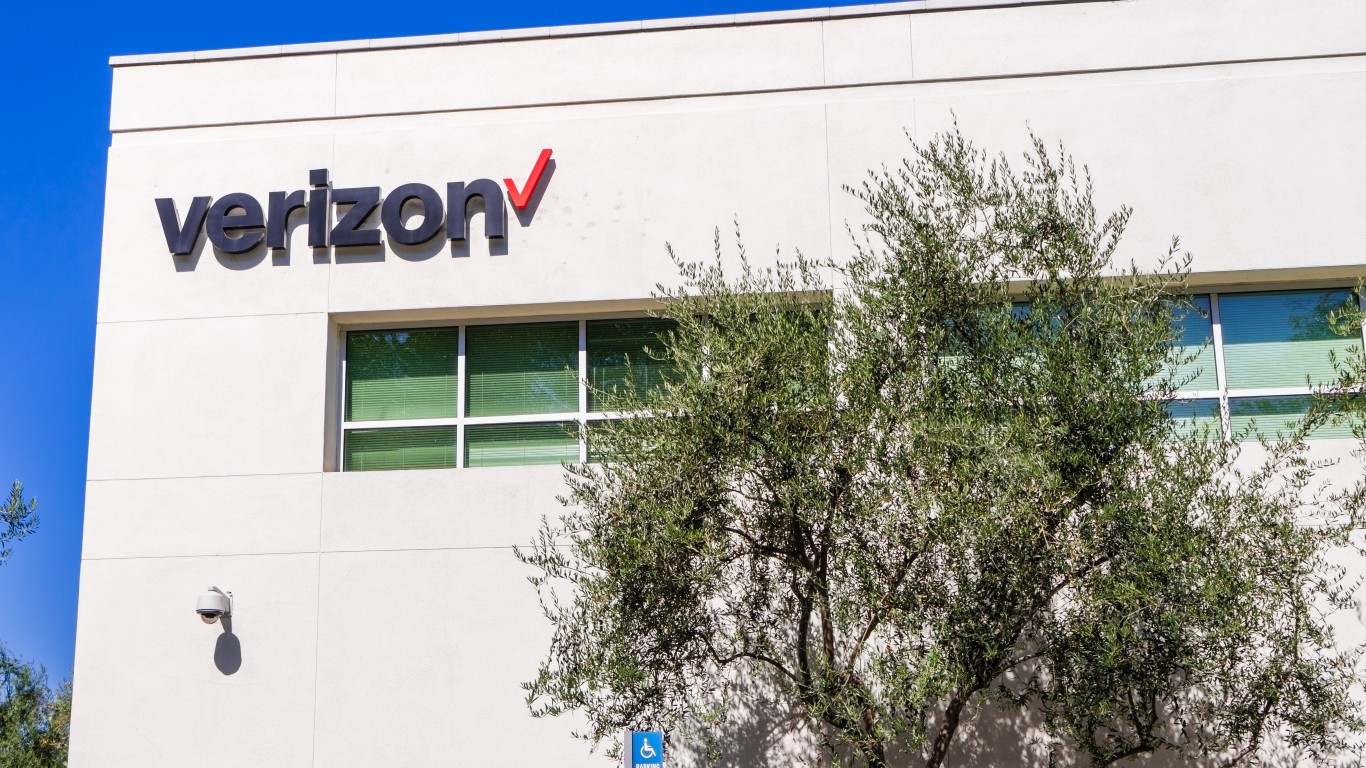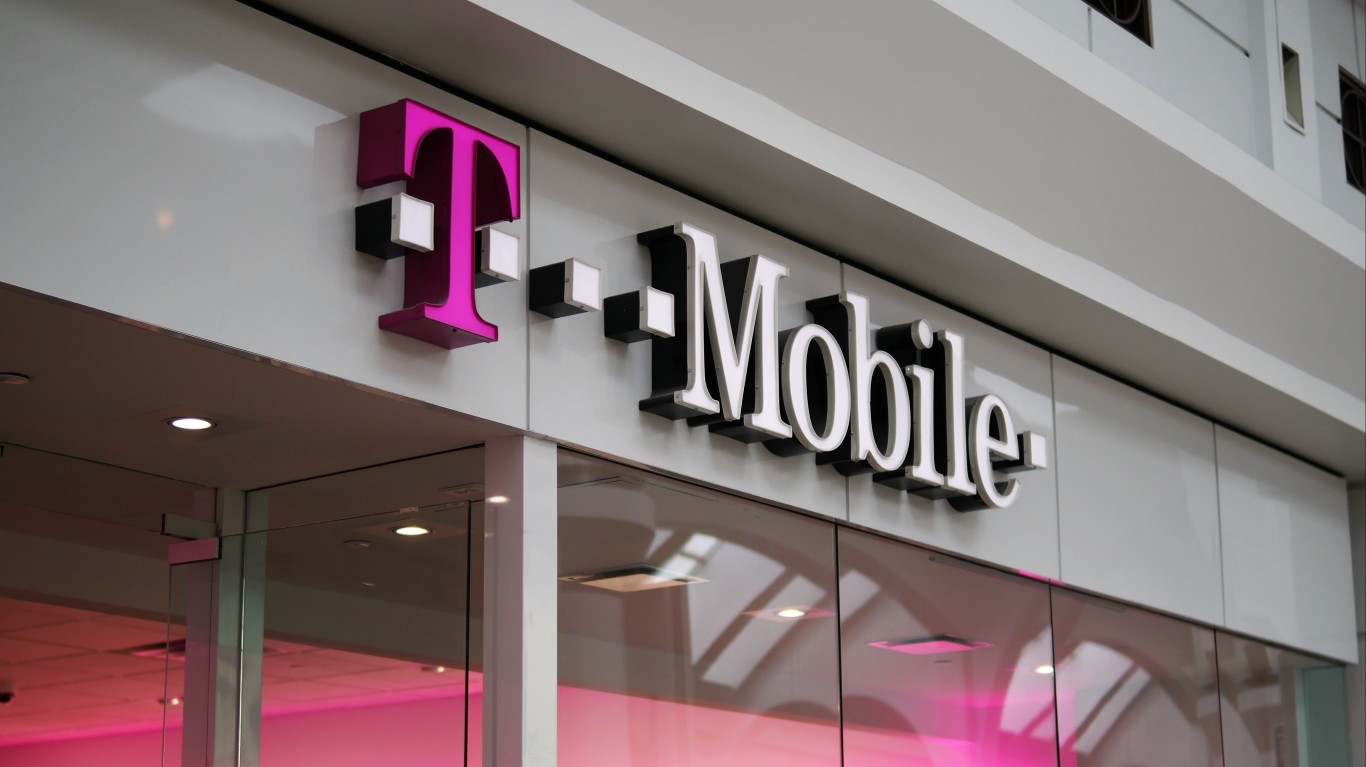On Tuesday, Sprint Corp. (NYSE: S) came out with earnings that beat Wall Street’s expectations. However, an earnings beat typically only serves as a short to intermediate term catalyst for investors. Over the long term, profitability, in the form of earnings and free cash flow, determines the delivery of superior shareholder returns.
While Sprint beat the expectations of Wall Street analysts, taking a closer look at its financial statements yields an uglier picture. In the most recent quarter, Sprint’s revenue declined 9% year over year. Its net income swung to a $20 million loss from $23 million in net income the same time last year. Sprint’s free cash flow deficit widened 355% from the same time last year.
Some Wall Street analysts were more upbeat about Sprint, while others were more skeptical. A number of analysts offered opinions on how to restore Sprint to profitability. Let’s check them out.
Argus stuck to its Hold rating. However, the Wall Street firm narrowed Sprint’s loss forecast and gave the company kudos for promotional, cost reduction and distribution expansion:
We are narrowing our FY15 loss forecast to $0.25 from $0.28 per share and maintaining our FY16 loss forecast of $0.26 per share. Despite the company’s dismal P&L, we give Sprint credit for making progress on customer acquisition/retention. Since taking over as CEO on August 11, 2014, Marcelo Claure moved quickly to make the company’s plans more promotional and competitive. Mr. Claure’s mandate is clearly to turn around subscriber acquisitions. He killed off Sprint’s “Framily Plan” and related advertising campaign within days of his appointment. He began by simplifying Sprint’s plans and making them more price competitive.
Mr. Claure is also cutting overhead to bring Sprint’s costs more in line with its declining revenues. Sprint is targeting $1.5 billion in costs cuts in FY15 in a range of areas. It has already announced significant layoffs and is working to realign its vendors. In a bid to increase its retail distribution, Sprint took advantage of RadioShack’s bankruptcy to take over space in 1,435 RadioShack stores, and co-brand the stores as Sprint-RadioShack. The deal doubled Sprint’s retail distribution.
ALSO READ: 8 Large Companies Valued Under 10 Times Earnings
Moreover, Argus rightfully highlighted Sprint’s high level of long-term debt, causing interest expense to exceed reported operating income in the most recent quarter, which should concern long-term shareholders. Lowering interest costs would go a long way in restoring Sprint to profitability. Argus agrees that Sprint’s debt lowers its investment potential:
Our financial strength rating on Sprint is Medium-Low, the second-lowest rank on our five-point scale. Sprint had $2.3 billion in cash and $34.1 billion in total debt at the end of 1Q15. Debt/total capital at the end of FY14 was a high 61%. Sprint has $1.25 billion in debt maturing in FY15 and $3.65 billion in FY16. The company had cash flow from operations of $2.45 billion in FY14.
The ratings agencies rate Sprint’s debt in the mid-B’s, below investment grade. Moody’s lowered its rating a notch to B1 and its outlook to negative in December 2014. S&P lowered its rating a notch to B+ and its outlook to negative in February 2015.
ALSO READ: Merrill Lynch Has 3 Buy-Rated Stocks Breaking Out on Price and Volume
Argus also expects that Sprint will not reinitiate its dividend anytime soon, which represents a good thing until Sprint can get its interest cost under control: “Sprint suspended its quarterly dividend in February 2008, and we do not expect it to be restored.”
Wells Fargo maintains an upbeat opinion about Sprint, offering “an Outperform rating and a valuation range of $8 to $10 Sprint Corporation.” Wells Fargo highlighted some good strategic and financial reasoning for its opinion:
While we acknowledge a higher cash burn than expected was seen, much of this has to do with the timing of the EIP receivables. It announced two new initiatives centered around the leasing. While more details on this are yet to come, it is clear leasing is a key pillar of its forward looking strategy. We also believe Sprint has more up its sleeve in terms of how these initiatives will translate in a unique and differentiated offer to the consumer. We sense such an offer will be announced soon. While not a quick fix hearing Sprint’s non-executive Chairman Masa Son on the call expressing his support in the story and the assurance that Sprint does not plan to tap the debt or equity markets for the “foreseeable future” are very positive data points supporting our Outperform rating on Sprint.
Wells Fargo had this to say about Sprint’s leasing initiatives:
S intends to establish a leasing company with Softbank and others as minority owner to securitize its leasing receivables. This is expected to securitize Net Present Value (NPV) of lease payments as well as residual value of the device, and reduce the drag to working capital. CEO Marcelo Claure also indicated S is preparing a network equipment leasing facility.
ALSO READ: 3 Biotech Stocks to Buy With Huge Catalysts Coming Soon
However, Wells Fargo still expects Sprint to bleed red (though in lesser amounts) for fiscal 2015 and 2016:
Our new FY2015E revenue and EPS are $32.7B and -$0.12 vs. $34.1B and -$0.39 prior and FY2016E are $32.8B and -0.08 vs. $33.8B and -$0.40 prior, respectively.
Interestingly, Wells Fargo believes the best bets for shareholders lie in a possible merger, cost cutting efforts and deployment of new technologies:
We believe Sprint is the most interesting stock on our wireless list right now. We view Sprint’s outlined path for Network Vision very positively. Potential catalysts include: continued M&A potential, margin expansion and deployment of 2.5GHz spectrum.
Merrill Lynch maintained a bearish tone for Sprint and lowered its price target to $3.25 per share from $4.00. the firm thinks the shares are overvalued and harbors a negative view on Sprint’s competitive positioning:
We believe Sprint shares are overvalued based on what is known about the combined Sprint/Clearwire/Softbank’s strategy and our forward looking estimates. The net change in the competitive climate has been negative in the intervening time, and our growth expectations have not changed materially, leading to our Underperform rating.
ALSO READ: 4 Oil Services Stocks With Potential Upside of 75% or More
Morningstar does the best job of summing up Sprint’s barriers to profitability, which include the cost of marketing, customer recruiting and retention and investment in infrastructure:
Sprint’s current challenge is to balance capital spending to improve its network and capitalize on its spectrum position, against investment in marketing and promotion to grow the customer base today. Network improvement is critical to long-term customer retention, but revamping the Sprint brand will likely only become more difficult the longer it languishes. In its current state, Sprint can’t afford to vigorously pursue both goals. Sprint has recently cutback on capital spending to shift resources to promotional efforts and limit cash burn, but this move likely reduces the value of its spectrum holdings, at least absent selling some of this asset to another carrier.
Morningstar’s target price resides at $5 per share.
S&P Capital IQ has not changed its Hold rating for Sprint, although it did cut its target price for the stock from $6 to $4 per share due to the company’s valuation. S&P Capital IQ expects lower losses next year. On a positive note, the firm gave Sprint praise for the expansion of distribution and improvements in its network:
We cut our 12-month target price to $4 from $6, on lower revised peer-average enterprise value-to-EBITDA of 6.6X our FY 17 (Mar.) estimate. We narrow our FY 16 (Mar.) loss per share estimate to $0.25 from $0.27 and keep FY 17’s at $0.10 loss. S posts Jun-Q adjusted EBITDA of $2.1B vs. $1.8B, better than estimated, mainly due to cost cuts. We positively view lower postpaid churn of 1.56% and 675,000 postpaid net additions. Despite postpaid phone losses of 12,000, we are encouraged by recent improvement. We like distribution expansion and network enhancements but note cash burn.
ALSO READ: Merrill Lynch Has 3 Industrial Stocks to Buy After Earnings
Finally, in a nutshell, Sprint needs to attract and keep customers by keeping them happy via investment in infrastructure to maintain and improve services. At the same time, the company needs to cut its costs and lower its long-term debt in order to restore profitability. This combination represents a nearly impossible feat for Sprint.
Are You Ahead, or Behind on Retirement? (sponsor)
If you’re one of the over 4 Million Americans set to retire this year, you may want to pay attention.
Finding a financial advisor who puts your interest first can be the difference between a rich retirement and barely getting by, and today it’s easier than ever. SmartAsset’s free tool matches you with up to three fiduciary financial advisors that serve your area in minutes. Each advisor has been carefully vetted, and must act in your best interests. Start your search now.
Don’t waste another minute; get started right here and help your retirement dreams become a retirement reality.
Thank you for reading! Have some feedback for us?
Contact the 24/7 Wall St. editorial team.



